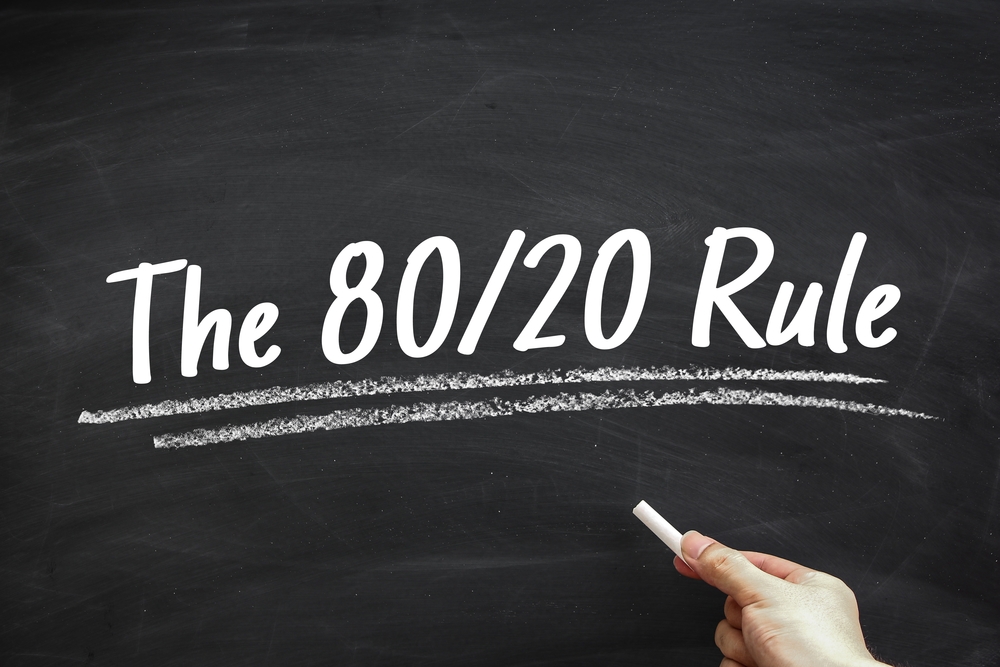“I hated every minute of training, but I said, don’t quit. Suffer now and live the rest of your life as a champion.” – Muhammad Ali
People leave your company for a lot of reasons – they don’t like the work, don’t like the boss, or they get a better offer somewhere else. Some things you can control, some things you can’t. One area that is in your control is how well you train employees. If your training program is solid, your employee retention will be solid as well.
Turnover costs money. Studies on the cost of employee turnover are all over the place. Some estimates peg the cost at 6 to 9 months of the employee’s salary, while others indicate that it is much higher. Based on these estimates, a delivery driver or sales person making $40,000 or $50,000 per year, could cost north of $20,000 to replace.
The cost of employee turnover hurts your income statement, but it also hurts customer service and operations. By improving employee retention you can avoid these pain points. The 80/20 of employee training will give you the tools needed to train employees so they have the best chance to succeed with your company.
The 80/20 of Employee Training
- Beware the three little bears of training: too little, too much, just right
- Best practices of training: Appeal to the highest level of thinking
- Use the 80/20 process: focus on the goal and the vital few
- Benchmark for success: Use turnover ratios to monitor progress
Three Little Bears of Training
Throughout my career, I have observed the ‘three little bears’ of training repeatedly: too much, too little, or just the right amount of training. The first two are deadly for employee turnover.
Too much training occurs when every possible detail about the job responsibilities are jammed into the employees head on day one – the core job duties, the exceptions, the one-off situations. The ‘too much trainer’ understands the job, but doesn’t understand how to simplify and spoon feed instructions to the employee. The employee is left bewildered and overwhelmed.
Too little training takes on different forms. In some cases, an employee is hired, shown quickly what to do, and then left on their own. They sink or swim. Usually they sink.
In other cases, the ‘too little trainer’ plays hide and seek with the information. Perhaps they show the employee most of what they need to know in order to complete a task, but they leave out a vital step. I’ve seen this done as deliberate sabotage – the ‘too little trainer’ didn’t want the employee to succeed. Or, the trainer simply wasn’t good at communicating the key steps. Either way, the employee loses, and your income statement loses.
Obviously, the goal is to find the ‘just right’ amount of employee training so that your employees have the best chance to succeed with your company. And that’s what we’ll cover next with the employee training best practices.
Employee Training Best Practices
There are dozens of training best practices out there, but below are the ones that I feel most strongly about. I believe these are the key factors to give your employees the best chance at success.
- On-Boarding: Start off on the right foot
- Big Picture Training: What we do, and how you make a difference here
- Appeal to the Highest Level of Thinking = Highest Level of Performance
On-Boarding. Remember that people are overwhelmed the first few weeks on a new job. Everything is new at this stage – new people, names to remember, new routine. Keep it simple, and allow them time to acclimate to the new environment. Before you bury them in policies and procedures, show them where the bathroom is.
Big Picture Training. In our company, we felt it was important to show employees the big picture of the business. New hires spent an entire day working each part of the operation – sales, merchandising, warehouse, delivery and admin. This provided an opportunity to experience all aspects of the business, and understand how they fit in. People exist to make a difference in the world – Big Picture Training can show them how.
Appeal to the Highest Level of Thinking. This is one of my favorite quotes from Jack Stack, author of the Great Game of Business: “When you appeal to the highest level of thinking, you get the highest level of performance.”
Teach employees to think, ask questions, and understand the process of their work. Teach them to see beyond their role, and how they fit into the larger mission of the company. Teach them to ask questions: Why am I doing this? What value does this add? How can I improve? When you appeal to the highest level of thinking, employees get engaged. When they are engaged they have the best chance for success.
Focus on the 80/20 of Employee Training. The 80/20 rule can be applied in every area of your business including employee training. 20% of activities create 80% of the results. Likewise, you can identify the vital 20% of training that creates 80% of the employee benefit. That’s what we’ll cover next.
The 80/20 of Employee Training
80/20 training is a process you can use to identify the result you want, and focus your efforts on those training activities that help achieve the result. The 80/20 concept is a great tool, but it takes time and a thoughtful approach to do it right.
- Identify the goal – The 80% results you want
- Identify the training needed to achieve the goal – the 20% effort, and where to focus training
For example, if you hire a customer service person, and providing great customer service is the goal, then focus your training here. It sounds obvious, but we often lose sight of the goal when the actual training begins. The customer service job involves computer training, trips to the post office or the bank, and a host of other tasks that are necessary but distract from the primary goal. Connect the goal to training. Identify the 20% training efforts (customer service training, product training) that will get you the 80% results you want (excellence in customer service).
Think of 80/20 training as ‘training on purpose’. Be thoughtful about what the job is, and the results you want to achieve. Focus most of the training time on the 20%, the vital few. Focus on the aspects that will have the biggest impact. Establish a training plan that gives you the best chance to achieve the goal.
Wrap Up and Benchmarks
Measure your progress with 80/20 training by using an employee turnover ratio. Simply divide your average number of total employees by the number of employees that leave the company. If you have 100 employees on average, and 10 leave during the year, your annual turnover rate is 10% (10 employee departures divided by 100 average employees).
If you have higher turnover in one department (sales for example) you can measure turnover for just that department. Measure turnover so you can manage and improve. If 80/20 training is working, keep it up.
Employee turnover is expensive. The goal of 80/20 training is to help create successful employees who want to stay with your company. If the employee succeeds, the business succeeds and so does your income statement. Beware the three little bears of training, use the training best practices and give 80/20 training a try in your company.





